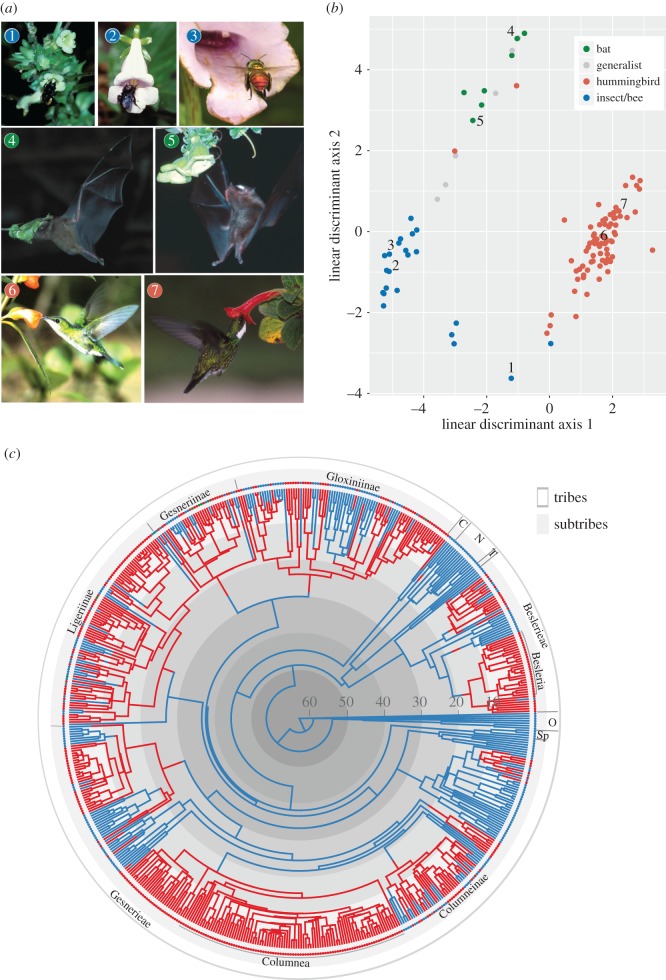Figure 1.
(a) Examples of plant–pollinator interactions in the Gesnerioideae (images 1–7); photo information in the electronic supplementary material, table S2. Photo credits: images 1, 2, 4, 5, 7 by I. SanMartin-Gajardo; image 3 by a. Weber; image 6 by L. Freitas. (b) Discriminant analysis conducted for 118 plant species and nine floral traits. Numbers refer to species shown in (a). Electronic supplementary material, table S2, provides the morphological data and the source of pollinator observations for each species. (c) Bayesian common ancestor (CA) phylogenetic reconstruction showing one stochastic mapping of pollination syndromes. White and gray boxes correspond to taxonomic tribes and subtribes. Names following classification by [20]: N, Napeantheae; C, Coronanthereae; T, Titanotricheae; Sp, Sphaerorrhizinae; O, outgroups. Colours on branches correspond to pollination syndromes: blue, insect; red, hummingbird. Trait states: blue, insects; red, hummingbirds; green, bats. Grey concentric circles have 10 Myr span.

